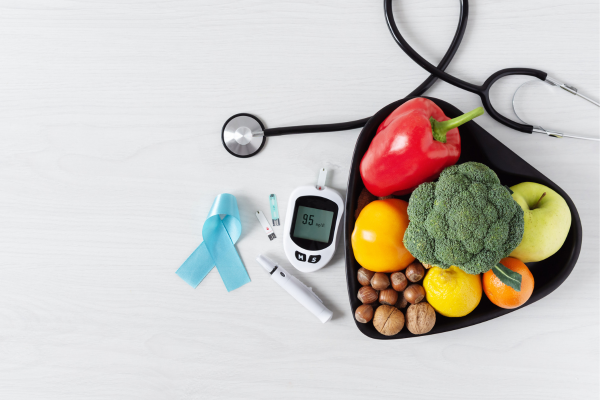This bulletin focuses on managing type 2 diabetes and was created for Sri Lankans worldwide. – By Dr Harold Gunatillake


It is written by Dr Harold Gunatillake-OAM, who holds FRCS, FICS, FIACS, AM(Sing), and MBBS(Cey) qualifications.
https://designrr.page/?id=275574&token=3743295896&h=5628
https://designrr.page/?id=25727&token=1660128502&h=2296
Concept of proper management with lifestyle modifications
Individuals with Type 2 diabetes who take anti-diabetic medication may experience decreased insulin sensitivity. This can make beta cells more resistant and is an essential factor to consider when managing the condition. While many people find it sufficient to take their medication as prescribed, maintain a low glycemic index diet, and monitor their HbA1c levels every 3-6 months to keep their levels below 7.2, this approach doesn’t encourage the pancreas to produce insulin that can resist stress. Instead, the medication prescribed controls their blood sugar levels and makes insulin-producing Islet cells in the pancreas less active. This situation is worse for those who take insulin injections to control their blood sugar.
When the insulin secreted by the beta cells is stressed and less active, we call it
Insulin resistance.
Insulin resistance is a complex medical condition that occurs when the body fails to respond effectively to insulin, a hormone produced by the pancreas that regulates blood sugar levels. A range of genetic and lifestyle factors can contribute to insulin resistance. While anti-diabetic medications, including insulin, can help control blood sugar levels, they may lead to the beta cells that produce natural insulin becoming more resistant to its function. Therefore, relying solely on antidiabetic medications may not provide a permanent solution for managing insulin resistance.
Which medication can increase insulin secretion?
Secretagogues, such as sulfonylureas and glinides, are medications that stimulate insulin secretion from the pancreas. They work by stimulating the beta islet cells to secrete insulin. However, these secretagogues may not be able to reduce blood sugar to normal levels and as a result, insulin may not be able to effectively bring down blood sugar levels to the normal range.
So, your doctor will add another antidiabetic drug, but the effect is the same. This is the reason why most diabetics are on more than one drug.
Various medications may lower blood sugar to give an Hb A1C in the normal range. But so long as your insulin produced by the beta cells is stressed and resists its function, you are cheating yourself.
It’s like holding a sheet of asbestos between the fire and you, preventing you from seeing the fire.
Today, we will discuss methods to prevent and reverse diabetes through lifestyle changes, not medication.
Diabetes reversal by lifestyle modification is a healthier option. It must be encouraged in all the patients in the pre-diabetes group (HbA1c- 5.7–6.4%) and those with newly diagnosed type 2 diabetes mellitus (HbA1c- >6.5%) without any complications, thus promoting good health-seeking behaviour. There are pieces of evidence of complete diabetes reversal of the patients with HbA1c ranging from 8 to 15% by just lifestyle modification and also without any complications among the patients registered under the ‘World free of obesity and diabetes’ campaign. Sri Lanka is a low-middle-income country with a prevalence of T2D on the rise.
It is essential to have a glucometer to manage diabetes effectively. However, the cost of testing strips is quite high, with each strip costing over Rs. 75, while a packet of rice costs only a third of that price. Therefore, it is crucial to provide a sustainable and cost-effective solution to the community for primary and secondary prevention of this lifestyle disease.
It’s important to stress that patients with high HbA1c can completely reverse diabetes through lifestyle changes alone, without medication and without complications.
The “World Free of Obesity and Diabetes” campaign challenges current guidelines for managing type 2 diabetes.
A research paper written by Jagannath V. Dixit, 1 Shraddha Y. Badgujar, and Purushottam A. Giri, published online on 2022 Jun 30, reveals that a 45-year-old male resident of Texas, U.S.A, was diagnosed with type-2 diabetes mellitus on September 05, 2020, with HbA1c 14.9%. His physician prescribed oral hypoglycemic agents (OHA) starting immediately due to his high HbA1c levels. However, the patient was reluctant to be on lifelong medications. Thus, he chose conservative
management of lifestyle modification by enrolling in the “World Free of Obesity and Diabetes” campaign that advised an “only two meals a day and exercise” regime for diabetes reversal. He followed the plan meticulously, and his HbA1c was successfully reduced by 9.8% (HbA1c from 14.9% to 5.1%) within three months without any medications. The patient follows the regime without compromising his quality of life and has maintained his HbA1c at 4.6% till April 2021. Diabetes reversal by lifestyle modification is a healthier option. It must be encouraged in all the patients in the prediabetes group (HbA1c: 5.7%–6.4%) and those with newly diagnosed type 2 diabetes mellitus (HbA1c: >6.5%) without any complications, thus promoting good health-seeking behaviour.
Eating food is crucial in managing your blood sugar and insulin levels. Consuming highly processed, high-carbohydrate and high-fat foods can cause your body to produce more insulin. On the other hand, opting for foods with a low to medium glycemic index and limiting foods with a high glycemic index can help you manage and even reverse insulin resistance.
Now, let’s discuss the best diet to lower your insulin resistance.
A low glycemic index (GI) diet with a low glycemic load primarily consisting of plant- based foods is the recommended dietary solution for managing diabetes. This means you must cut down on sweets, chocolates, puddings, desserts, sweetmeat, and other high-sugar confections. By following this planned diet, the beta cells in your pancreas will produce more sensitive insulin, which can reduce the need for medication in early diabetes (also known as prediabetes or spring diabetes).
Obesity
Obesity can cause various chronic diseases, including insulin resistance. Insulin resistance is often triggered by obesity and is closely associated with diabetes. When obese, their adipose tissue releases higher amounts of non-esterified fatty acids, glycerol, hormones, and pro-inflammatory cytokines, which can contribute to developing insulin resistance. However, weight loss achieved through caloric restriction has been shown to mitigate and reverse insulin resistance.
Insulin resistance is a common metabolic issue associated with obesity, and it is linked to chronic diseases like type 2 diabetes and cardiovascular disease. However, research shows that weight loss achieved through caloric restriction can help reduce and reverse insulin resistance. Furthermore, combining an endurance exercise training program with a calorie-restricted diet has been suggested as an effective way to improve insulin sensitivity even further.
Walking can increase insulin sensitivity.
Walking is a low-impact workout that can increase insulin sensitivity and control blood sugar levels.
How does exercise make your body more sensitive to insulin?
During physical activity, the body’s insulin sensitivity increases. This means your muscle cells can use insulin to take up glucose more effectively. As your muscles contract during activity, they can take up glucose and use it for energy, regardless of whether insulin is present.
Today’s lesson is that type 2 diabetes can be prevented or reversed with lifestyle changes alone, without the need for medication.
My medical history is fascinating. I was a severe diabetic with high blood pressure and asymptomatic coronary heart disease. I was on 30 units of Novomix insulin twice a day and on ACE inhibitors and calcium blockers. My eGFR dropped to 32, meaning that my kidneys were failing and needed dialysis in 5 years.
“I began walking for two hours every day and gradually increased it to 4-5 hours daily, starting around mid-2019. Currently, at 95 years old, I don’t need to take any medication for diabetes or blood pressure. Before leaving for Sydney a year ago, I visited my cardiologist, who put me on the Tred meal. Even after a 10-minute workout, he found no abnormal changes and instructed me not to return for two years as Medicare wouldn’t cover it.
My kidney function-eGFR has improved and stood at 42 during testing six months ago.
So, that is my truthful story. You can do it and be healthy like me.
I hope this article will facilitate contemplating the proper management of lifestyle changes without medication.
Disclaimer :
The information contained in this article is for general information purposes only, and whilst the author will endeavour to keep the information up to date and correct, eLanka makes no representations or warranties of any kind, express or implied, about the completeness, accuracy, reliability, suitability or availability with respect to the eLanka website or the information, products, services, or related graphics contained in this article for any purpose. Any reliance you place on such information is therefore strictly at your own risk. In other words, eLanka In no event will we be liable for any loss or damage including without limitation, indirect or consequential loss or damage, or any loss or damage whatsoever arising from loss of data or profits arising out of, or in connection with, the use of this website / article. Also please note that through this website / web page articles you are able to link to other websites which are not under the control of eLanka and therefore we have no control over the nature, content and availability of those sites. The inclusion of any links does not necessarily imply a recommendation or endorse the views expressed within them.







